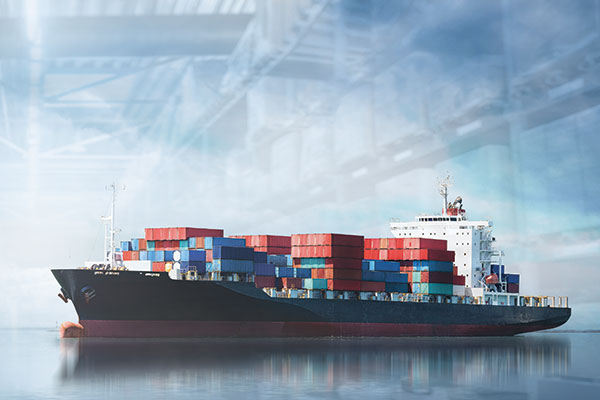The on-going pandemic has created chaos for retailers and manufacturers trying to keep up with supply and demand, maintain analysts with Chicago-based commercial real estate broker JLL
Lee Allen, Managing Director, JLL Port and Global Infrastructure observes that during the last few months, a number of vessels have been diverted from LA/LB to Oakland and Seattle. An even larger number of one-off container ship sailings, referred to as loaders, went to the U.S. East Coast, particularly Savannah.
“Two of the largest ocean carriers, Maersk and Mediterranean Shipping, announced new services from North Vietnam and China to the U.S. East Coast via the Panama Canal calling on Savannah, Charleston and New York,” he says. “Ports are taking all sorts of actions to improve freight fluidity in their gateway. These operational changes have helped, but it’s not enough.”
According to Allen, the normal flow of goods and equipment (containers and railcars) has been very disrupted but is expected to smooth out as consumers return to “normal” buying patterns as the pandemic lessens its hold. As vaccination rates increase, consumer spending on goods will slow down and shift to services (travel and leisure), and manufacturers should experience less labor issues which will help them to increase production capacity, however we expect less volatility and more “normal” supply and demand patterns by Q4 2021 or Q1 2022.
But what are the implications for industrial real estate?
Allen maintains that retailers can be expected to spread out the risks associated with overcrowding ports by using a “four-corner” strategy (use a mix of port gateways) which will increase the demand for industrial real estate in nearly every port market, but especially in NY/NJ, Savannah, Charleston, and Seattle-Tacoma-Vancouver.
“Houston has started to gain traction as retailers begin to realize that a “five-corner” strategy is an even better way to mitigate supply chain risk,” says Allen.
There is a continued trend towards East Coast ports (via the Suez Canal) as well as an increased demand and usage around inland port logistics parks.
“We expect the industrial real estate markets of Savannah and Charleston collectively to double in size in the next ten years in response to supply chain realignments and east coast ports’ volume growth,” says Allen.
In short, the “shipping crisis” as we are living it today could become the new norm – retailers and other importers will continue to mitigate supply risks by diversifying their ports of entry in the U.S. This is in addition to the population boom the Southeast has experienced in the last decade.
“The Port of Savannah expects the industrial market to add 75 million cubic square feet of business with Charleston expanding by 50 million square feet,” Allen notes. “With these factors in mind, it is imperative to view this change in international shipping as an opportunity to invest in port real estate.”
Ports will continue to see volume growth, so developable land near ports on all coasts will continue to see demand as well which has been the case.
“All in all, we expect this shipping crisis to level out over time as the pandemic diminishes in criticality and the economy to grow,” concludes Allen.
SC
MR


More Ports & Shipping
- Shining light on procurement’s dark purchases problem
- As Red Sea Crisis Drags On, Shippers Eye Alternatives
- Global Container Shipping Industry Sets Sights on Tech Investment, Capacity Concerns
- US Ports to Share $653M in Funding to Improve Throughput, Reduce Emissions
- The Astonishing Port of Laredo
- Navigating the Panama Canal Drought: Tips to Get Your Shipments Moving
- More Ports & Shipping
Latest Podcast

 Explore
Explore
Topics
Procurement & Sourcing News
- Israel, Ukraine aid package to increase pressure on aerospace and defense supply chains
- How CPG brands can deliver on supplier diversity promises
- How S&OP provides the answer to in-demand products
- There is still work to do to achieve supply chain stability
- Blooming success: The vital role of S&OE in nurturing global supply chains
- How one small part held up shipments of thousands of autos
- More Procurement & Sourcing
Latest Procurement & Sourcing Resources

Subscribe

Supply Chain Management Review delivers the best industry content.

Editors’ Picks





